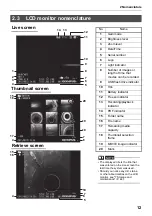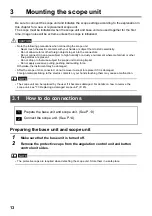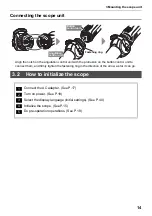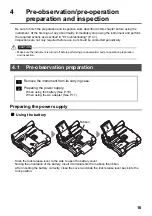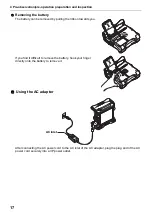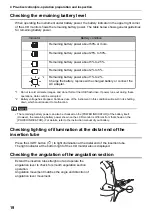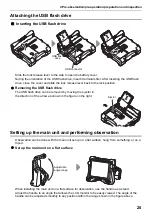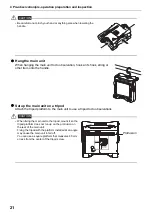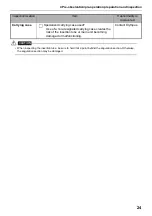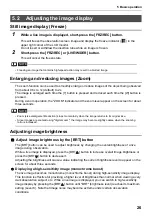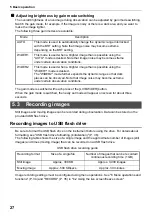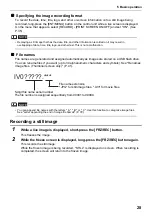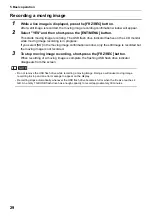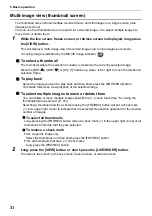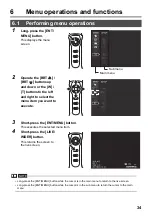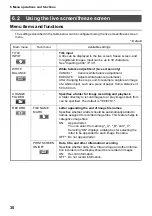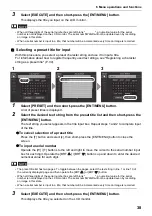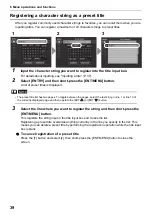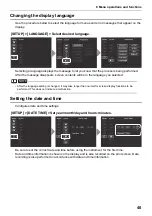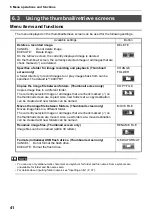
26
5 Basic operation
5.2
Adjusting the image display
Still image display (Freeze)
1
While a live image is displayed, short-press the [FRZ/REC] button.
This will freeze the observation screen image and display the freeze indicator (
) in the
upper right corner of the LCD monitor.
Do not insert or withdraw the insertion tube while an image is frozen.
2
Short-press the [FRZ/REC] or [LIVE/WiDER] button.
This will cancel the freeze state.
NOTE
•
Freezing an image that contains high-speed action may result in a blurred image.
Enlarging and reducing images (Zoom)
The zoom function can be used to smoothly enlarge or reduce images of the object being observed
from about 0.5x to 1x (default) to 2x.
The image is enlarged each time the [T] button is pressed and reduced each time the [W] button is
pressed.
During a zoom operation, the "ZOOM" indicator and the zoom level appear on the screen for about
three seconds.
NOTE
•
Zoom (size enlargement/reduction) stops momentarily when the image returns to its original size.
•
Since images are zoomed using "digital zoom", the image may become slightly coarse when the zooming
ratio is increased.
Adjusting image brightness
Adjust image brightness by the [BRT] button
The [BRT] button can be used to adjust brightness by changing the overall brightness of a live
image during observation.
While a live image is displayed, press the [BRT
] button to increase overall image brightness or
press the [BRT
] button to decrease it.
Adjusting the brightness will cause a value indicating the current brightness level to appear on the
screen for about three seconds.
Displaying a high-sensitivity image (monochrome boost)
The live image becomes monochrome (monochrome boost) during high-sensitivity image display.
This function is effective for providing a higher level of brightness than normal when viewing a very
dark observation subject, etc. While a live image is displayed, you can switch to high-sensitivity
image display by pressing the [BRT
] button until "BRT" (brightness level) reaches its maximum
setting (Level 8). Note that image noise may become extreme under certain observation
conditions.
Summary of Contents for IPLEX TX
Page 1: ...INSTRUCTIONS INDUSTRIAL VIDEOSCOPE IPLEX TX ...
Page 3: ......

